Bus Interchanges and Bus Terminals are public transport facilities that are used as terminating points for bus routes, serving as key transport nodes that support the commuting needs of their localities. Under the hub-and-spoke model, buses are frequently used for first and last-mile connections, hence these transport facilities are often built near MRT stations.
Bus Interchanges
Bus Interchanges are large commuter facilities serving multiple bus routes, with most also offering connections to the Mass Rapid Transit (MRT) network. They are integral to Singapore’s hub-and-spoke public transportation network, where commuters frequently rely on buses for last-mile connections.
List of Bus Interchanges (Click to expand)- Ang Mo Kio
- Bedok
- Bishan
- Boon Lay
- Buangkok
- Bukit Batok
- Bukit Merah
- Bukit Panjang
- Choa Chu Kang
- Clementi
- Eunos
- HarbourFront
- Hougang Central
- Joo Koon
- Jurong East
- Jurong Town Hall
- Pasir Ris
- Punggol
- Punggol Coast
- Sembawang
- Sengkang
- Serangoon
- Tampines
- Tampines Concourse
- Tampines North
- Tengah
- Toa Payoh
- Woodlands (Temporary Bus Interchange)
- Woodlands (Integrated Transport Hub)
- Woodleigh
- Yio Chu Kang
- Yishun
Integrated Transport Hub (ITH)
Several bus interchanges are designated as Integrated Transport Hubs or ITHs. These interchanges are located near MRT stations and have fully air-conditioned passenger concourses. These are often built within commercial and residential buildings as part of an integrated development.
List of Integrated Transport Hubs (Click to expand)| No. | Opening Month | ITH |
| 1 | May 2002 | Toa Payoh |
| 2 | Jan 2003 | Sengkang |
| 3 | Apr 2007 | Ang Mo Kio |
| 4 | Dec 2009 | Boon Lay |
| 5 | Sep 2011 | Serangoon |
| 6 | Nov 2011 | Clementi |
| 7 | Nov 2014 | Bedok |
| 8 | Nov 2015 | Joo Koon |
| 9 | Sep 2017 | Bukit Panjang |
| 10 | Sep 2019 | Yishun |
| 11 | Jun 2021 | Woodlands |
| 12 | Dec 2024 | Buangkok |
| 13 | Apr 2025 | Woodleigh |
| 14 | Apr 2025 | Pasir Ris |
| 15 | Jun 2025 | Punggol Coast |
Bus Terminals
Bus Terminals are smaller facilities used as regional terminating points for bus services. Compared to bus interchanges, they handle fewer bus services and often have more basic commuter facilities. Some bus terminals do not allow for passenger boarding and alighting.
List of Bus Terminals (Click to expand)In Singapore:
- Beach Station
- Buona Vista
- Changi Airport Terminal 2
- Changi Business Park
- Changi Village
- Gali Batu
- Ghim Moh
- Kampong Bahru
- Kent Ridge
- Lorong 1 Geylang
- Marina Centre
- Queen Street
- Resorts World Sentosa
- Saint Michael’s
- Shenton Way
- Sims Place
- Tuas
- Upper East Coast
In Johor Bahru, Malaysia:
Ghim Moh and Sims Place are currently the only two roadside terminals left in Singapore. Another roadside terminus is located along Jalan Kembangan (outside Kembangan MRT), but this facility is not officially designated as a bus terminal.
Bus Depots used as route termini
Some bus depots in Singapore are used as route termini of bus services:
Private Bus Termini
These facilities are used only by private buses:
- Little India
Little India Bus Services – Private buses to/from workers’ dormitories
- Prince George’s Park
National University of Singapore Internal Shuttle Buses
Bus Parks
Bus Park used to park buses only, with no boarding and alighting activities allowed:
| Bus Park | Remarks |
| Hougang Bus Park | Supports Hougang Central Int during construction of the Cross Island Line Hougang Station |
In addition, several regular bus services terminate at bus stops which do not count as bus termini. These are:
- Bartley Road
Service 146 - Hougang Street 21
Services 53M & 115 - Jalan Kembangan
Services 42 & 135 - Jalan Rumah Tinggi
Service 63 - Toa Payoh Link
Service 230 - Ang Mo Kio Street 63
Services 45, 265 & 268
Upcoming Bus Interchanges & Terminals:
Works in Progress / Construction Tenders Issued
- Jurong East Integrated Transport Hub (Jurong Gateway Hub)
(Under Construction; projected completion 2027) - Kallang Bus Interchange
(Integrated with Kallang Horizon BTO Project; Under Construction) - Beauty World Integrated Transport Hub
(Mixed-use Development at Bukit Timah; within Bukit V Mall; projected completion 2028) - Tampines North Integrated Transport Hub
(Under Construction) - Tuas Transport Hub
(Bus terminal at Tuas Port) - Changi Airport Terminal 5 Integrated Transport Hub
(Part of the Ground Transportation Centre at Changi Airport Terminal 5)
Under Planning
- Bedok South Integrated Transport Hub*
- Chencharu Bus Interchange
- Hougang Central Integrated Transport Hub*
- Tampines Integrated Transport Hub**
- Tengah Integrated Transport Hub*
- Tiong Bahru Integrated Transport Hub*
- Marina South Integrated Transport Hub^
- Woodlands North Integrated Transport Hub**
- Choa Chu Kang Integrated Transport Hub
- Bishan Integrated Transport Hub**
- Turf City Integrated Transport Hub**
* – As per URA Draft Master Plan 2019
^ – As per Land Transport Master Plan 2040
** – Mentioned as part of Draft Master Plan 2025
Abolished Bus Interchanges and Terminals
- Compassvale Bus Interchange
- Ang Mo Kio Temporary Bus Interchange
- Bedok Temporary Bus Interchange
- Boon Lay Temporary Bus Interchange
- Bukit Panjang Bus Interchange
- Bukit Panjang Temporary Bus Park
- Old Choa Chu Kang Bus Interchange
- Clementi Temporary Bus Interchange
- Hougang South Bus Interchange
- Kotaraya II Bus Terminal (JB)
- Lim Chu Kang Bus Terminal
- Marina South Pier Bus Terminal
- Marsiling Bus Terminal (1980s-1996)
- New Bridge Road Bus Terminal
- Old Pasir Ris Bus Interchange (1989-2025)
- Rumah Tinggi Bus Terminal
- Sengkang Temporary Bus Interchange
- (Former) Shenton Way Bus Terminal
- Taman Jurong Bus Terminal
- Toa Payoh Temporary Bus Interchange
- (Former) Tuas Bus Terminal
- Woodlands Bus Interchange (1970s-1996)
- Woodlands Regional Bus Interchange (1996-2016)
- Yishun Bus Interchange (1987-2015)
- Yishun Temporary Bus Interchange
*This list of abolished bus interchanges and terminals is non-exhaustive
History
In the past, private bus companies built and operated their own bus termini. They were usually located along the roads and were plenty in number, adding to the difficulty of integrating various different bus routes. In the 1970s, smaller-scaled bus terminals were built, most of them by the Public Works Department (PWD) and the Housing and Development Board (HDB). The private bus companies would then rent these terminals for thousands of dollars per month.
In the late 1970s, the construction of new towns resulted in the idea of regional bus interchanges to take over the roles of the bus terminals. This would improve efficiency and reduce overlapping of bus routes. Early bus interchanges were designed and built by the HDB, which was also the main architect of bus stops and other facilities for public transport.
Starting in 1976, SBS started its Bus Terminal Improvement Programme, leading to the phase-out or relocation of 28 bus terminals. Many moved to major bus interchanges located at the centre of the new towns. In 1978, Jurong Bus Interchange was opened, being Singapore’s first bus interchange.
With the construction of the MRT in the 1980s, bus transport in Singapore slowly adapted in favour of centralised bus interchanges that provide connections to the MRT, and the use of multiple feeder bus services to link up different parts of new towns with MRT stations. This was complemented by a 1981 Ministry of Communications report that evaluated the public bus system, and found that interchanges and terminals needed to be better coordinated with the development of new towns and MRT stations.
In 1983, the Government and its statutory boards took over five bus interchanges and more than 50 roadside termini from SBS [Link], while also taking over the building and maintenance of all bus interchanges and termini in future. Bedok, Bukit Merah, Clementi, and Woodlands Interchanges were taken over by the HDB, while Jurong Interchange was taken over by the Jurong Town Corporation, and terminals were distributed among statutory boards in charge of the land they were built on. The cost of building the five bus interchanges, at roughly $9 million, was written off by SBS, as was the cost of the bus termini. Ownership would later be merged under the Land Transport Authority (LTA), which was formed in 1995.
In 1996, Woodlands Regional Bus Interchange was opened. Built by the Mass Rapid Transit Corporation (MRTC), this novel design saw the bus interchange constructed underneath the elevated Woodlands MRT Station, to maximize space for the development of the surrounding town centre.
Starting in the 2000s, bus interchange designs in residential towns evolved into Integrated Transport Hubs (ITHs), wherein bus interchanges are integrated into mixed-use developments. These air-conditioned facilities provide seamless links to MRT stations and adjoining commercial developments such as shopping malls. The first such interchange was Toa Payoh, which opened in May 2002.
ITHs have since been integrated with shopping malls, condominiums, and even HDB flats, as was the case for Woodleigh. As of June 2021, there are eleven ITHs in Singapore, with more expected to be completed in the years to come.
New bus interchanges have also been constructed to expand the capacity of existing bus interchanges. These are Tampines Concourse (opened 2016), Compassvale (opened 2017, closed 2024), and Jurong Town Hall (opened 2023).
Bus termini have also been constructed on the roof slabs of train depots to maximize land use. These are Tuas (opened 2017) and Gali Batu (opened 2021).
Current operations:
Today, construction of bus interchanges and terminals is commissioned by the Land Transport Authority (LTA). ITHs that are part of commercial buildings/condominiums/etc. are still built by private developers, but must follow LTA guidelines on architecture and commuter infrastructure.
With the rollout of the Bus Contracting Model in 2016, all bus interchanges and terminals are bundled together with Bus Packages which are subsequently tendered out to bus operators. Therefore, each interchange or terminal has a designated anchor operator, which is almost always the bus operator with the largest operations at the facility. Anchor operators must operate and maintain the bus interchanges/terminals, along with all the equipment and systems provided within, and provide bus service information to passengers.
While all bus interchanges have passenger facilities, not all bus terminals allow for passenger boarding and alighting.
Bus interchanges/terminals also double as overnight parking spaces for public buses, due to the lack of parking space within bus depots. This practice was common in the early 2010s but has since been reduced, with the construction of more bus depots and bus parks.
Facilities:
Bus interchanges (and some terminals) have one or more of such facilities:
- Interchange Office / Passenger Service Office
Staffed by the bus operators, this office is the management center of any bus interchange. It handles passenger inquiries, timekeeping for bus services and various other interchange operations. They usually have a computer terminal for drivers to clock the start and end of their scheduled trips. - TransitLink Ticket Office
Staffed by TransitLink personnel, this office mainly handles contactless card transactions among other services. - Drivers’ Lounge / Briefing Room
Where bus drivers take a break before their next departure. - NTWU Canteen
The National Transport Workers’ Union (NTWU) manages a group of canteens known as NTWU canteens which are commonly found at major bus interchanges. They provide healthy and low-cost meals for bus drivers, and are also open to members of the public. - Parking lots for the layover of buses
- Waiting berths
Berths are pick-up areas for buses. Most major interchanges have three services assigned to a berth, with queuing areas for passengers. - Alighting berths
Buses terminating at the interchange drop off passengers here before heading to park - Information board
Public transport operators design various information boards for their interchanges such as locality maps, bus service maps and bus information. - Bus arrival displays
This electronic bus arrival board contains timings of the next scheduled bus departure. - Service guide rack
The service guide rack is stocked with paper guides containing details of various bus services. - Retail Stalls
In recent years, bus operators have opened various stalls at their bus interchanges to increase profits by renting them out to vendors. Food stalls are among the most common. - Toilets
Some bus interchanges charge a small fee for members of the public. - Nursing Rooms
- Bicycle Racks
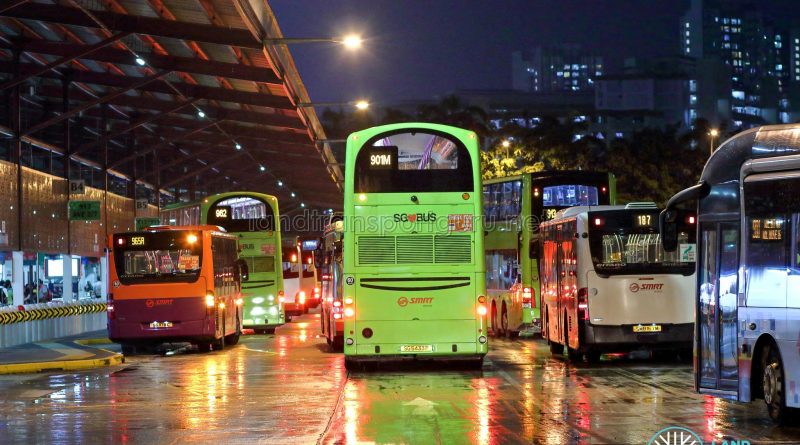
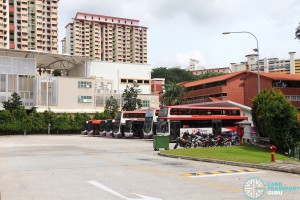
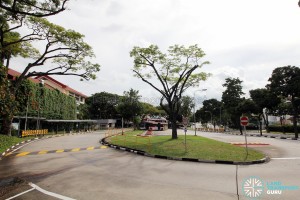
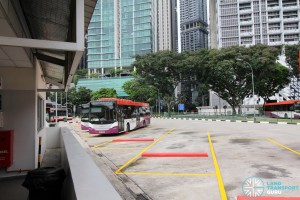
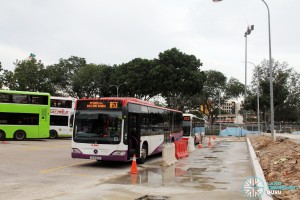
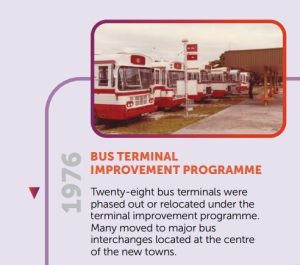
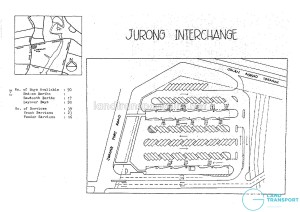
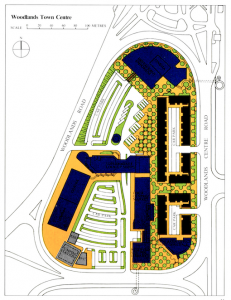
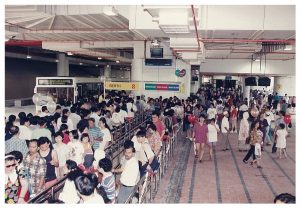
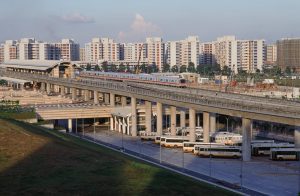
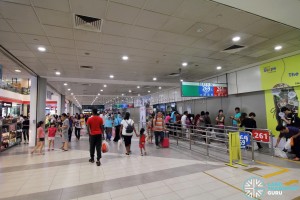
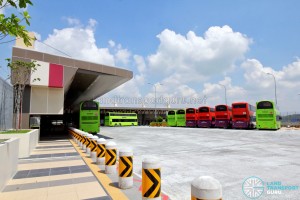
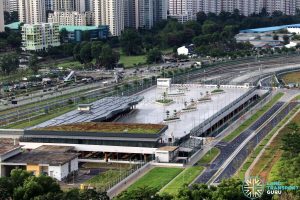
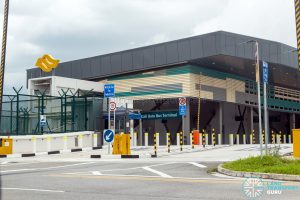
Mei ling terminal
Service 64 (extend), 413(New), 414(New),415(New to replace 983M),416(New),417 (New), 418(New to replace 143M),419 (New to replace 240M),420 (New)
Marina Centre Bus Terminal should have been integrated within Marina Square or Suntec City Malls and allow public access. Easy and more convenient for people to take the bus.
Lor 1 Geylang Ter should be converted to a bus park when Kallang ITH opens.
Woodlands Temp Int rename to Woodlands Square Int since it definitely does not look like it is going away anytime soon, same as Punggol.
Compassvale Int close, 110 go to Buangkok ITH, 374 go back to Sengkang. 965 go to Buangkok, One of the other Sengkang services also amend.
LTA Should build Marina Bay Sands Integrated Transport Hub.
Extend all bus services from Marina Centre Terminal to start and terminate at Marina Bay Sands Integrated Transport Hub
LTA should build a new ITH called Khatib Integrated Transport Hub.
Should have a few more Interchanges in Singapore for more connectivity
1. Lim Chu Kang ITH (Located inside future LCK Mall)-Woodlands Bus Package
Services at LCKITH are 170x(extended), 432(New), 435(New), 438(New), 975
2. Lakeside ITH (Located next to Lakeside MRT and inside future Lakeside Square Mall)-Jurong West Package
Services at LSITH are 187(Amend), 192(Extend), 861(New),930(New), 931(New), 932(New), 936(New), 939(New)
3. Hillview Bus Interchange (Located next to Hillview MRT and Rail corridor)-CCK-Bukit Panjang Bus Package
services at Hillview INT are 61, 122, 653, 991(All amended)